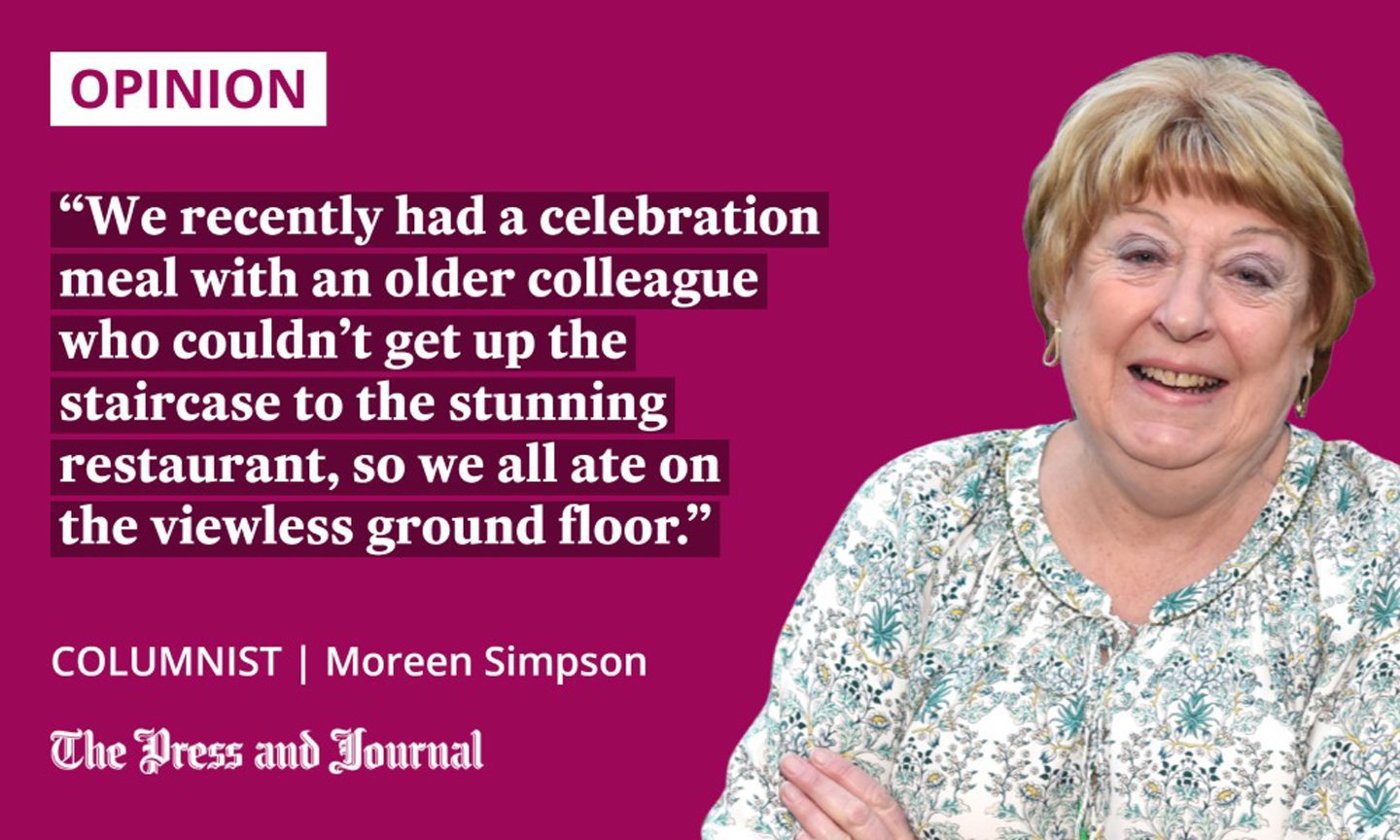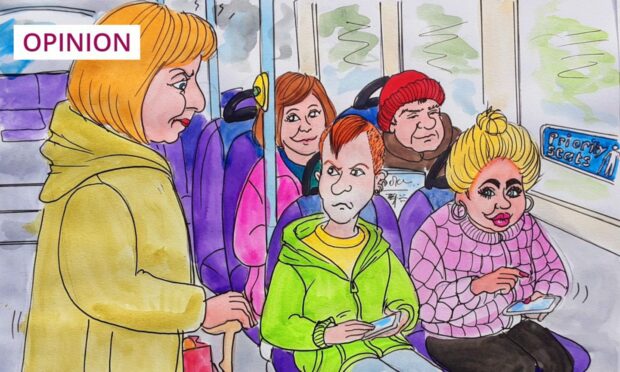About three years since I started using a walking stick – time to review.
As a Markies ad would say: it’s not your basic aluminium NHS support, but a German, lightweight, Leki “Wanderfreund”, complete with crook-style handle. A gift (I suspect expensive) on my 60th birthday from my hillwalking-mad aunt and uncle, who lived well into their nineties and obviously expected me to join them on their various “val-der-ees” to Austria when I retired.
I was gutted they hadn’t given me something more glam and chucked it awa’ at the back of the wardrobe, instantly forgotten. But, Losh min, it’s been my saviour since I went all breathless and prone to hiterin’ ower the littlest buckie in my path.
When I started using it, my trusty Leki took a bit of the weight off me, and I felt less vulnerable to cowpin’ schnozzle-first – like I did trying to catch the bin mannies, and helter-skeltered onto the tarmac. (Remember? Three months, twice a week for dressings on my razored shin.)
Trust me, you wrinklies oot there, if you start gettin’ a bit doddery on yer pins, get yersellie a stick. I ken some are too prood to be seen with a hirplin-helper, but mind this: the merest misstep might lead to: “Fit like, Woodend orthopaedics?”

Thankfully not seriously disabled, yet I’ve seen how too many places are no-go zones for those with mobility problems. Several superb eat-ooteries in the Neest are up steep stairs to which there is no other access. I can sometimes pech up to them but, unfortunately for some others, they’re totally out of bounds. Ironically, those places are usually the ones with the best views.
We recently had a celebration meal with an older colleague who couldn’t get up the staircase to the stunning restaurant, so we all ate on the viewless ground floor. Another time, at a town by a beach, our wheelchaired friend couldn’t get to the restaurant overlooking the bay and, rightly, chose not to tough it oot in the packed public bar on the ground floor.
I’ve also a bit of a gripe aboot some passengers on First bussies. As you get on, the seats facing are marked with walking stick signs for folk with physical problems. Yet, countless times, I get on and find young folk on their mobiles, mums with toddlers or just plain, selfish, able-bodied folk.
Yes, I’m one of those wifies who gives a withering look and totters along to find the nearest vacant seat. But, in the past couple of weeks, since First got its new leccy buses, it’s even worse.
Silent and energy-saving they might be, but they appear to have been designed by someone intent on a future career as a Himalayan mountaineer. If you canna get a seat near the front, you’re faced with climbing several high steps.
Sez me to my driver the other day: “These new buses are nae for the less nimble.” Obviously not a stranger to my complaint, sez he: “Tell me about it!”
Oor Willie can wear whatever he wants
Fit a stooshie ower Prince William apparently takkin’ ill o’ the kilt. Insiders claim he’ll never wear it again, having got a sickener after being forcibly buckled into it as a bairn.
Nae great shock in that. I thought a’body kint wee loons loathe kilts. I’ve sad memories of one of my uncles reducing his sons to tears and tantrums every Sunday, pre-kirk.
The thing is, maist Scotsmen tend to grow oot o’ that phobia and, eventually, are only too happy to lash oot on the family tartan and belt it up for every wedding.
Oor Willie, however, continues to be devoutly anti-plaid, prompting some gypes to harrumph that he, therefore, canna be the king of Scotland. Fit guff. Carry on kiltless, m’loon, and don’t even think about the compromise of those horrific tartan trews. Actually, I blame yer dad.
Several times ower the decades in this column, I’ve appealed to my mate Chazzer to draw a close to his bizarre habit of donning the kilt every time he sets foot on Scottish soil. Never, ever has he worn the troosers. I suspect he’s even in his Dress Stewart howkin’ manure at Birkhall.
D’you ken ony mannie that’s kilted 24/7, apart fae Rob Roy at Culter? Must be something connected with an antediluvian royal tradition. Sure as hell, it has nothing to do with normal life north of the border.
I’m nae sayin’ oor monarch disnae look affa swunkie going the Full Highland, especially in that bonnie, light-green effort. But surely oor king should start dressing, most of the time he’s here, like a true Scotsman – kiltless.
Moreen Simpson is a former assistant editor of the Evening Express and The Press and Journal, and started her journalism career in 1970


